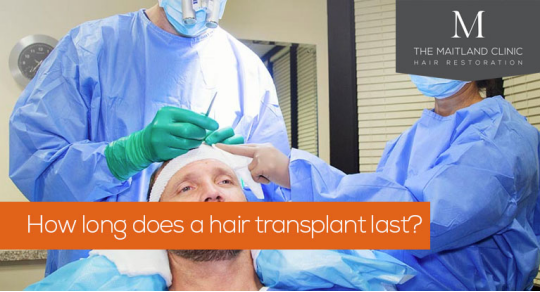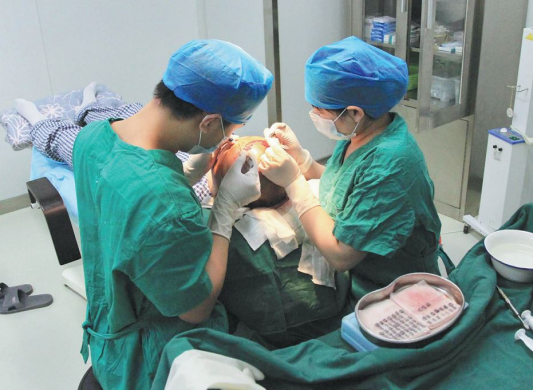
Hair Transplant Surgery Procedure | Step by Step
Finding a doctor and going through the consultation process is only the beginning of your hair transplant experience. Many potential patients are curious about the actual process of the surgery and what happens on a technical and medical level.
Even though you might have a basic understanding of how hair transplants work, you might be interested in zooming in and seeing what the process involves with a more detailed explanation.
Today, we’re going step by step to show you exactly how hair transplants happen and clear up any points of confusion you might have about the process.
Arrival and Preparation
At the consultation, you and the surgeon will have mapped out a clear plan for your hair transplant, including details like the construction of your hairline, the number of grafts required, the length of the procedure, and more.
Of course, you will also set a date and time for the surgery, and you should follow the surgeon’s directions for the weeks and days leading up to the main event.
Meeting with Surgeon
When you finally arrive at the clinic on the day of surgery, you will connect with the surgeon once again to review the details of the procedure and ensure that everything is in order.
By now, you should have complete confidence in the abilities of the surgeon and the technicians assisting in your procedure. This is the time to ask any last questions before preparing for the surgery itself.
Ready for Surgery
You may have your hair washed by a technician at this stage, and the surgeon will mark the designated areas on your scalp to give visual reference points for himself and technicians during the procedure. From there, you will enter the operating room and be seated comfortably in a reclined position.
A local anesthetic will then be administered to the donor area of the scalp, which is where hair will be harvested and processed before grafting individual units to the recipient areas of the scalp. Depending on the type of procedure, you may or may not receive an anesthetic to the recipient area at this time.
As the staff begins to get to work, you will have the option to watch TV, listen to music or an audiobook, or just relax and ease into the process.
Harvesting Hair from the Scalp
No matter what type of hair transplant you sign up for, the first portion of the procedure will always involve harvesting hair from the donor area, typically at the back of the scalp towards the neck.
Let’s discuss the two main types of hair transplants and how the harvesting process differs between them.
FUT
Follicular Unit Transplant, also known as FUT or strip surgery, is the most popular form of hair transplant, and you will most likely choose for your own procedure.
Patients do not need to shave the back of their heads prior to this procedure.
With a scalpel, the surgeon will make a thin, horizontal incision along the back of the head to remove a strip of hair-bearing skin containing plenty of robust and healthy follicle units.
The length of the strip will depend on the number of grafts needed to cover the designated spaces on the recipient area, and the surgeon will aim to extract only as much skin as is necessary to fulfill that goal.
From the client’s perspective, there might be a slight pulling or pinching sensation on the donor area where the strip of skin is being removed, but this does not last long, and the wound is quickly patched up by the surgeon or a member of the staff.
There is also a high volume of blood flow in this area of the body, meaning your natural healing capabilities will be working overtime to close up the opening with the help of sutures.
An interesting point about FUT is that the surgeon and technicians only spend about 20% or 30% of the total surgery time working directly on the patient. Most of the attention is focused on processing follicle units and preparing them for grafting, which we’ll discuss soon.
FUE
An increasingly popular alternative to FUT is known as Follicular Unit Excision, or FUE.
For this procedure, the clients are required to shave their heads to allow surgeons and techs more direct access to the follicle units at the back of the head.
Since FUE is a method of harvesting donor hair, this is the critical variable that sets it apart from FUT or other strip surgery forms.
Rather than removing a horizontal piece of hair from the donor area, the surgeon will use a specially-designed hole-punch tool to extract individual clusters of hair known as follicle units from the back of the head.
This is an essential distinction from FUT for a few reasons.
First, it is a far more involved process for both the patient and surgeon compared to strip surgery. Instead of spending about a quarter of the time working directly on the patient, the doctor will spend more than 75% of the time extracting and grafting hair.
FUE also tends to take more time overall and yields fewer units to work with despite demanding greater input. However, there is less scarring, bleeding, and FUE is considered a less invasive procedure, by and large.
Keep in mind that when deciding on a procedure type, the experiences are slightly different between the two, among other factors that go into your choice.
Processing and Grafting
Whether you’ve had hair harvested via FUT or FUE, the units from the donor site must be quickly processed and transplanted. Here’s how it’s done and what’s different between the two major procedures.
Preparing Follicle Units
The hair taken from the donor area cannot be directly grafted to the scalp if surgeons want to maximize the effectiveness of these grafts.
That’s why a large part of the surgical duration is dedicated to processing and preparing follicle units from the donor area to be adequately grafted and take root with the most aesthetic, permanent results.
In the case of FUT, technicians are responsible for dissecting the hair-bearing skin, locating the best follicle units within the strip, and preparing them for grafting soon thereafter.
There is little time to waste at this stage since follicles are most effectively transplanted when they are still alive and well. The sooner they can be processed and grafted, the better.
Based on the instructions of the head surgeon, technicians will reduce the strip of skin to follicle units of a certain size, anywhere from 1 to 10 hairs total.
Not all units will be the same size, depending on the surgeon’s vision for coverage and natural-looking density.
If FUE is the method of harvesting, technicians will process these units as they are extracted one by one from the patient’s donor area. These round-shaped punch grafts are typically lower in hair follicle volume.
We can see that FUT grants surgeons a higher volume of quality hair and that they have more control over the size and shape of the units to be grafted. FUE offers plenty of strong hair for transplantation, though maybe not to the same extent of quality and quantity.
Grafting New Hair
When there are sufficient units processed and ready for transplantation, the surgeon will begin to make small incisions on the recipient area and carefully place follicles units into their designated areas.
This is the surgeon’s primary area of focus as technicians continue to examine and dissect hair from the donor area. Depending on the surgeon’s technique, they will move back and forth from extraction to grafting when performing FUE, although the steps usually happen one at a time.
In most cases, incisions will be made approximately 1/8 of an inch apart from each other, and surgeons will select the right-sized unit for placement in the proper direction for the best coverage. Hundreds to thousands of grafts can be set in a single session.
With an FUE procedure, things are slightly less precise due to the uniform size and shape of the units, but satisfactory results can still be achieved.
From the patient’s point of view, the grafting process can come with minor discomfort but is not considered painful by most clients.
Bandaging and Completion
When the final graft has been placed into the last gap on the hairline or vertex, the surgeon will clean and bandage the area, complete the surgery, and step out of the room before returning for a final meeting with the patient.
The surgeon will overview how the procedure went, and their staff will reiterate the instructions for recovery and give the patient everything they need for proper aftercare protocols.
The client will then head home and begin the recovery process, which will require a few daysof rest and caution before incorporating more regular activities for the next couple weeks.
Hair Transplantation Made Simple
The hair transplant process is a fantastic feat of technology and artistry. Now that you know what goes into each procedure, you may have a deeper appreciation for what these professionals do each day.
With that in mind, you can see first-hand why it’s so important to choose a high-quality surgeon and clinic for your procedure, whether it’s FUE, FUT, or something else. If you’re ready to book a consultation with Jae Pak, MD, there’s no better time than now.







Post comments